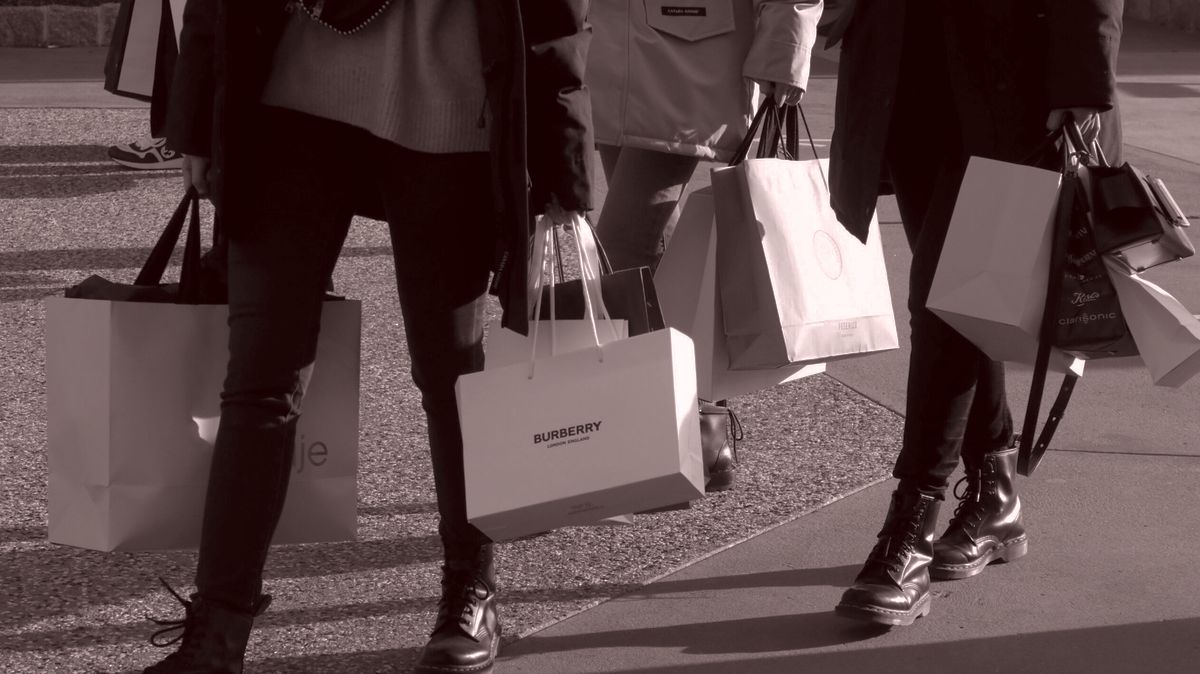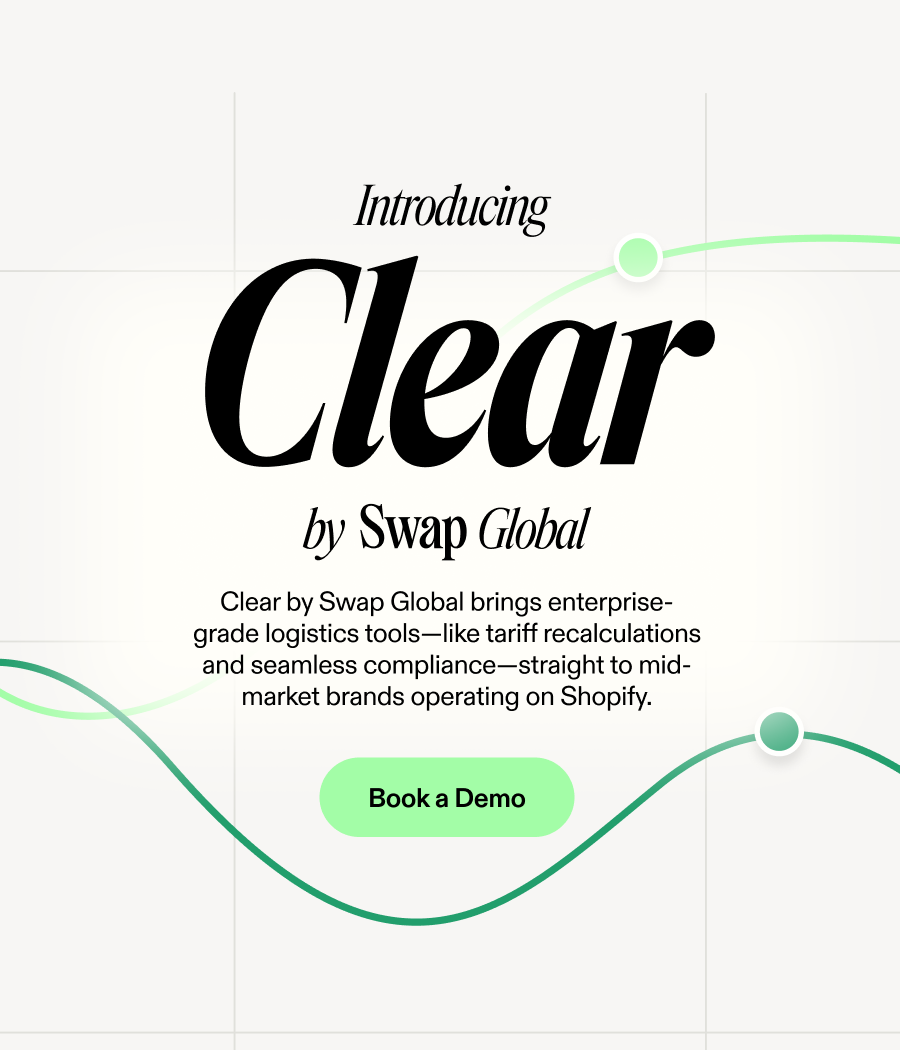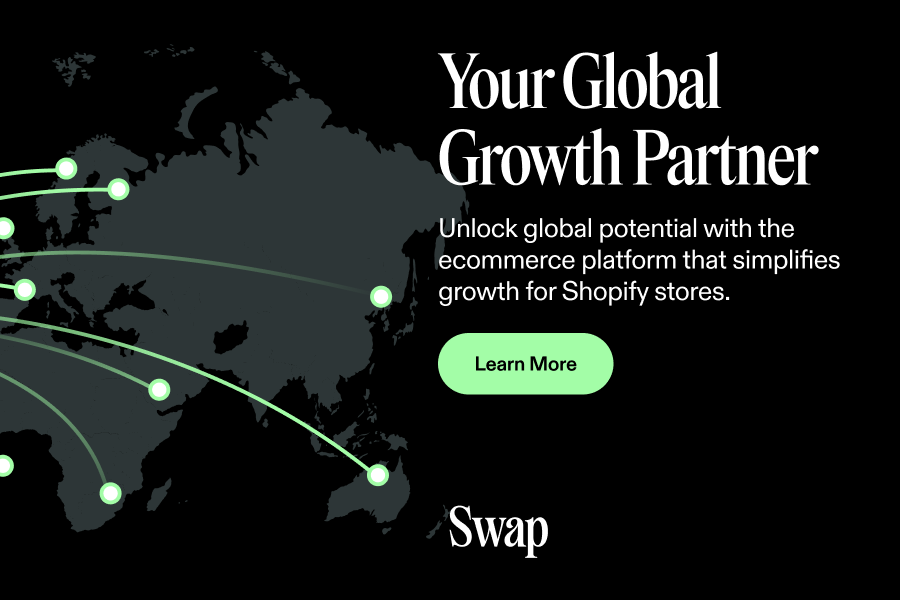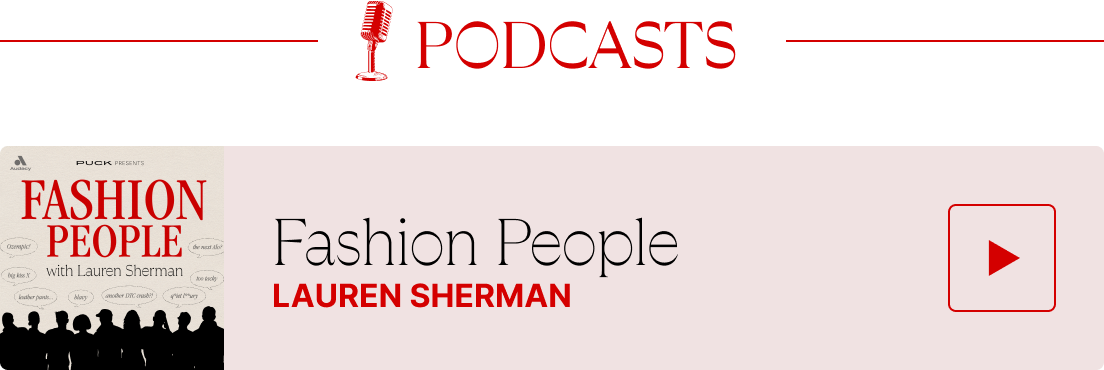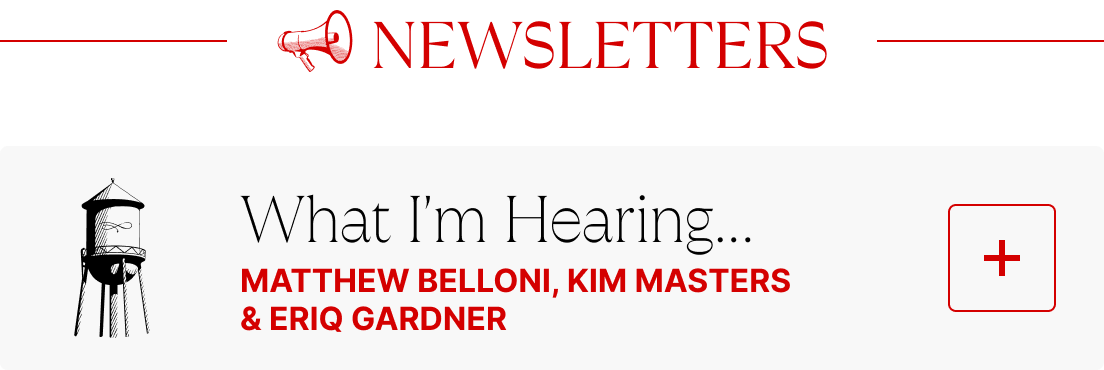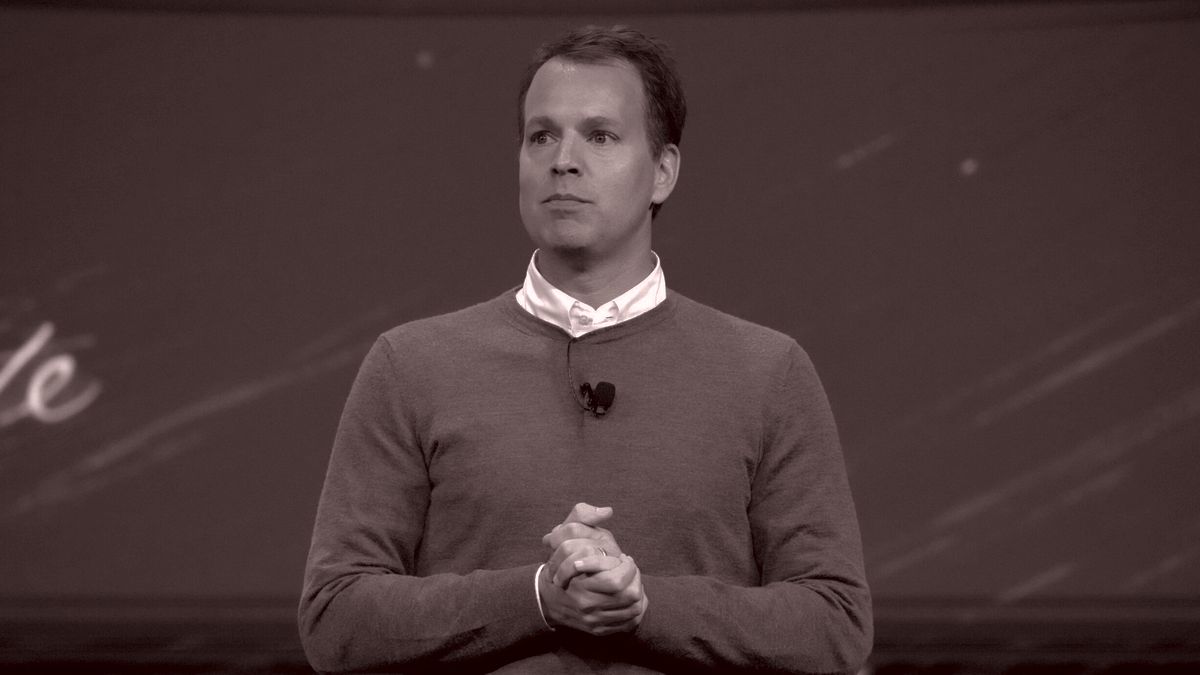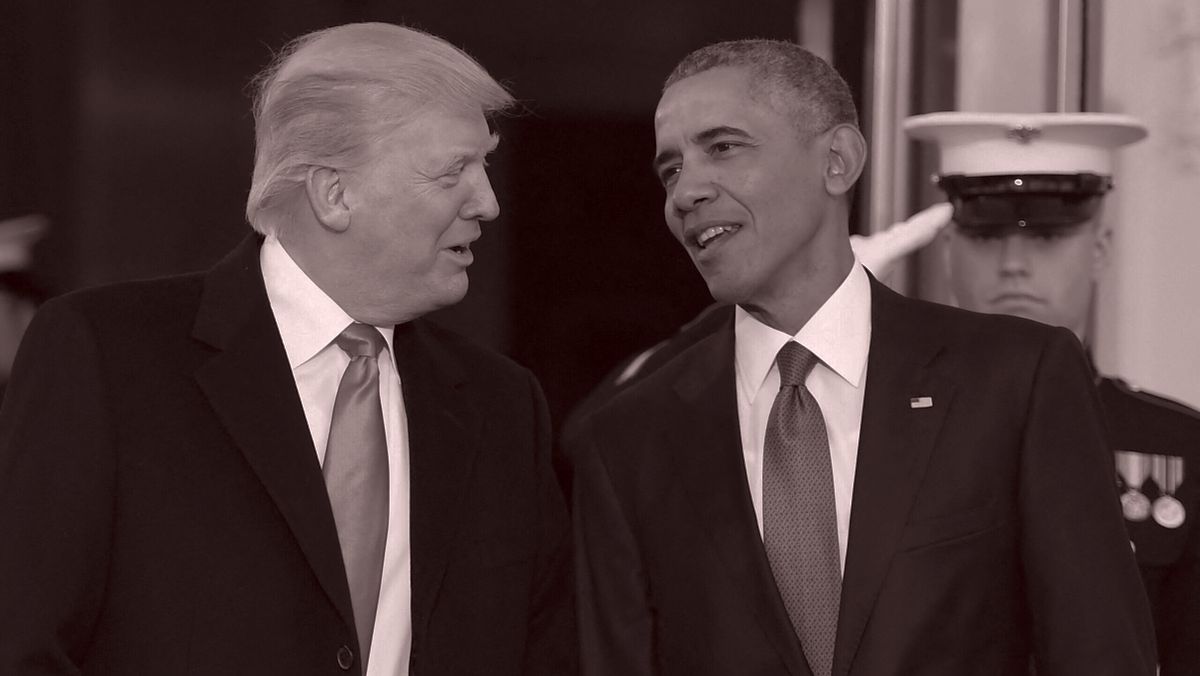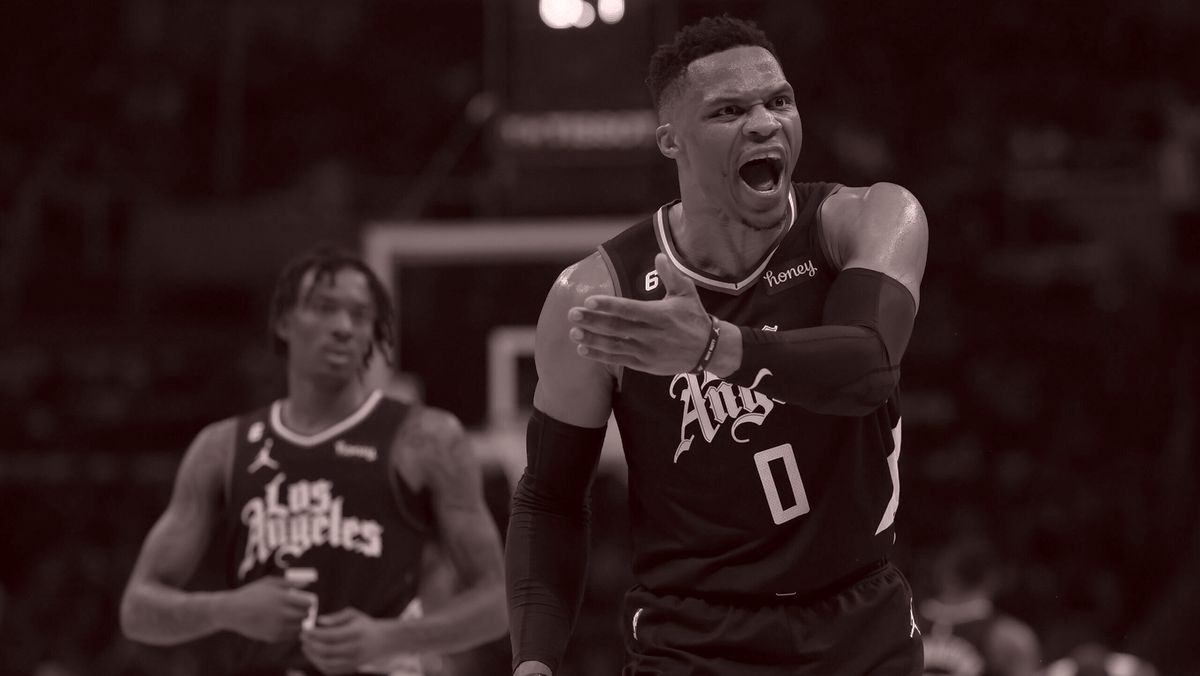Hi, and welcome back to Line Sheet. Happy F1 Miami Grand Prix to those who celebrate, and also to
those who were flown down there by a fashion brand.
For today’s special, Sarah “SShapiro@puck.news” Shapiro is here with a take on the remarkable, unrelenting power of the outlet store. Sarah also has some insights into how retail buyers are getting squeezed by the tariff nonsense, plus all the latest retail and shopping intel you need to know. For a little something
extra, I have a quick update on the future of New York Fashion Week, involving a new entity that wants to make it easier, and cheaper, for designers to stage runway shows now that WME Fashion has all but thrown in the towel on the biannual event.
By the way, I’ll be flying solo around New York this weekend during the run-up to the Met Gala. Thanks to everyone who came out last night for an early dinner at the lovingly restored Fedora in the West Village with Meta’s Eva
Chen and me. I’m going to be back in the city several times this year for more get-togethers, so if you would like to host one, feel free to hit up Alexandra@puck.news for more details.
The dinner was off the record, but I can confirm that Ray-Ban Meta sunglasses were discussed—and worn. (I hear they are playing a starring role at A$AP Rocky’s Met Gala afterparty, taking
place at Jean’s. Please don’t email the Jean’s people and ask for an in. It’s not happening.) Last night, I also made it up to the Guggenheim for Cultured and Valentino’s Cult 100 party and performance. It was a real feat on editor-in-chief Sarah Harrelson’s part.
Mentioned in this issue: Premium Outlets, Adam Cummings, Nike, Tory Burch, Prada, Amanda Bacal, Vuori, Abercrombie, Prince, Christina
Coniglio, Sarah Staudinger, Ralph Lauren Vintage, Julia Rabinowitz, Imad Izemrane, Leslie Russo, NYFW, and many, many more…
|
|
|
A MESSAGE FROM OUR SPONSOR
|
Global tariffs are changing ecommerce…and fast. Swap surveyed 100 ecommerce executives on the current state of global
retail with an alarming 83% of those surveyed expressing concern that new regulations could threaten their business.
How can you stay ahead and stay competitive? Download Swap’s “Tariff Turmoil Report” for a data-driven look at how leading ecommerce brands are preparing for the uncertainty ahead including:
➡️ The
changing trade policies impacting cross-border ecommerce.
➡️ How economists – and consumers – are responding to the change.
➡️ Future-proofed strategies brands are putting into place
Get the report.
|
|
|
Three Things You Should Know…
|
- We need to talk about KFN: There’s been a development in one of Line Sheet’s favorite micro-dramas. On Thursday, industry executives met at the Standard Hotel on the High Line to listen to a pitch from Imad Izemrane and Leslie Russo, the team behind a new “New York Fashion Week platform” that aims to solve the ongoing problem of NYFW generally sucking for attendees, brands, and sponsors alike.
A brief, incomplete history: Since the
advent of the internet, the trade has relied less and less on runway shows to conduct business. (You can access detailed images online and place orders via virtual showrooms; journalists no longer need to see the clothes in person to write about them, etcetera.) Also, as the industry concentrated in Paris and Milan, where the powerhouse brands are headquartered, the value of an event like New York Fashion Week declined—both for the brands looking to use it as a marketing tool, but also for the
City of New York, which saw revenue for the week plummet. There have been several attempts at revival—European designers beckoned to show for one season and the like—but nothing sustainable. Most recently, I heard murmurs that several factions were pushing for the Council of Fashion Designers of America (CFDA) to eliminate the February shows, focusing on September, when the weather is better and people are happy to be in town.
Of course, that would be a nearly impossible strategy to pull
off, not only because many New York–based designers still want to show two collections a year on the runway—driven in no small part by ego—but also because no one actually owns New York Fashion. Not the CFDA (they own the fashion calendar), and not WME Fashion, which operates under the moniker NYFW: The Shows.
Enter KFN, a new company backed by Kilburn Media and founded by Izemrane, co-founder of Spring Place, which served as a hub for WME Fashion’s shows for a long, arduous spell that
ended a couple of years ago. Izemrane has enlisted Leslie Russo, a former Condé Nast exec and president of IMG (where she controlled their fashion events department) to build a competitor to WME Fashion’s seasonal efforts, which have been whittled down in recent years. First, the division—run by another Condé Nast exec, Susan Plagemann—disbanded the hub model, noting that no one wants to show in the same venue anymore, à la the Bryant Park tents or
Lincoln Center. Then, late last year, WME Fashion spun off Focus, its production arm. (Focus head Dominic Kaffka relaunched the business independently earlier this year.)
But Izemrane—who bought Los Angeles Fashion Week a few years ago—believes that designers still need centralized support, and that the City of New York could stand to further benefit financially from what’s happening during those two weeks. For September 2025, he and Russo are forming a
network of venues that designers can access for free. There are other components, including an opportunity for young designers to stage a temporary showroom and participate in an editor’s breakfast, with more consumer elements to come down the line. Izemrane believes New York Fashion Week should be more like an Art Basel Miami experience, instead of a sort of shadow series of events happening without the rest of the city even noticing.
It’s not a crazy idea, although it has to be said
that much of what Izemrane is proposing has been attempted before in different iterations and with varying degrees of success. It’s been 16 years since Mac & Milk launched, and it’s long since faded away. However, I’m sure the CFDA and other parties are happy for WME Fashion to have a competitor. The young designers need cheap venues and support.
Coincidentally, I was told last fall that N4XT Experiences, Izemrane’s company that owns Los Angeles Fashion Week, was interested in buying New
York Fashion Week: The Shows from Endeavor, which is shopping around some of its non-endemic properties now that it’s a private company again. (Just today, it was announced that a new entertainment group led by Endeavor C.E.O. Ari Emanuel was buying the Frieze art fair for $200 million. It’ll be part of a new, as-yet-unnamed events company he formed.)
Back in September 2024, when I heard N4XT was looking at New York Fashion Week: The Shows, a
spokesperson for N4XT denied that they were interested, and WME denied it was for sale. Of course, the reality is that there’s not really anything to sell, per se. As for the rest of WME Fashion…?
- Sarah on fall fashion’s “boring” forecast: If you’ve got the Shoppies, I’m sorry to report that, per a retail insider, “no one’s original vision for Fall is going to come to life.” Retail, of course, is all about swift, first-to-market action, but the
tariff uncertainty is making the boardrooms hit pause on planning. So expect a boring Fall season. According to Amanda Bacal, S.V.P. of marketing at Joor, it will involve smaller collections focused on essential styles, along with price hikes to absorb tariffs—all while retailers frantically diversify sourcing away from China.
Buyers are also being more selective. Among the retailers that Joor surveyed, 71 percent of buyers reported having greater or equal open-to-buy
budgets than previous seasons, but they’re leaving extra money for later—placing small orders to test what actually performs, all in the hopes that inventory will be available for reorder. (Retailers also have some carryover inventory still on hand.) The catch-22 is that brands and designers probably won’t produce much additional merchandise without guaranteed purchase orders.
In the silver linings department, boutiques are having a moment, as I
wrote last week. Some are creating catalogues instead of investing in e-commerce, and opening smaller stores that require less inventory. Buyers are desperate for newness, and designers want to invest in wholesale partnerships versus D.T.C. Meanwhile, Shopbop is holding an open audition for brands to join their roster in August, in the mold of much-missed Henri Bendel’s famous and frequent open calls to find new brands and exciting merchandise. Shopbob likely announced the audition months ahead of time to take advantage of the immediate needs to cover the fall and holiday seasons, giving them time to see what
they need to add to make a splash in Q4. There may yet be hope for the Shoppies in the back half of the year. —Sarah Shapiro
- And finally…: New pop-ups include Magda Butrym in SoHo, their first physical retail presence in the U.S., where you can find sculptural draped garments, leather rosette handbags, and crochet pieces for summer. … Nordstrom is hosting New Balance at its Corner pop-up shop inside the Manhattan flagship, along with boxing and yoga classes for activations. … Coniglio Palm Beach, with their floral printed dresses designed by founder (and former LoveShackFancy
and Calypso St. Barth designer) Christina Coniglio, will have a shop-in-shop at the Bloomingdale’s Carousel on 59th Street in Manhattan. … Matteau launched an exclusive collection at Moda Operandi in celebration of their 10-year anniversary. … Mytheresa is building out its presence as the go-to ecommerce retailer for global designers, with exclusives (it’s Prada’s global online retailer) and
early launches, and now it offers early access to The Row. … I also found it notable that Dara Kaye jewelry, made from lab-grown stones, is launching in Bergdorf Goodman’s Jewelry Arcade. It’s the first lab-grown jewelry to be sold and highlighted in a department typically reserved for naturally mined
stones.
|
Matteau x Moda Operandi collaboration. Photo: Ilona Hamer/Courtesy of Matteau x Moda Operandi
|
- What
else? Gap x Dôen’s second collab expands into men’s and baby lines, a smart move to test menswear and see how women might style these pieces, too. The collab last year helped meet Gap’s need for revenue wins and style cred, and Dôen, for its part, is continuing to build awareness in an attempt to attract investors. Another returning collab for this summer is
Staud x Birkenstock, a partnership Sarah Staudinger forged with the heritage footbed sandal brand last year, which also marries well with the launch of Staud Sport and the raffia collab with St. Regis.
Lastly, Ralph Lauren Vintage made its online debut at RalphLauren.com, after having been exclusive to Madison Avenue and Rodeo Drive stores for previous seasons. Julia
Rabinowitz, a.k.a. the Millennial Decorator, helped spotlight this mid-April drop of pristine 1990s to early aughts runway pieces. I’m already seeing talk of Pucci and Versace vintage collections being sought after next, so perhaps we will see even more brands doing vintage drops in-house. —Sarah Shapiro
|
|
|
The outlet mall is evolving from a discount location into a more sophisticated retail
ecosystem—and people are willing to commute for it.
|
|
|
There’s a retail revolution hiding in plain sight, 40 miles or so down the 580, southeast of San Francisco,
at the Premium Outlets in Livermore. Here you’ll see the kinds of roped queues you’d expect outside places like The Row or Louis Vuitton in Paris, except they’re for Lululemon, Nike, Tory Burch, and even the true designer outlet stores like Prada. The people lining up aren’t necessarily hunting for the steep discounts one typically associates with outlet malls; they’re engaged in a sophisticated dance between perceived value and brand experience. Parking spots are nearly impossible to find on
weekends.
The Livermore outpost is just one of a growing number of large, elite outlet malls owned by Simon Property Group—including Woodbury Commons in New York, the Colonnade Outlets at Sawgrass Mills in Florida, two in Las Vegas, and a whole bunch in Texas—that are experiencing a renaissance of sorts, even as traditional suburban malls (like department stores more generally) continue their decline. “People will drive 50 miles to go to an outlet instead of their local mall,” said
Adam Cummings, who leads retail leasing for CBRE in the Americas. This willingness to commute explains, in part, why Simon’s Premium Outlets (trademark!) are expanding their tenant mix beyond clearance merchandise: Their customers are popping in for a full day of shopping and visiting multiple stores.
|
|
|
A MESSAGE FROM OUR SPONSOR
|
Tariffs are coming fast — but Swap moves faster. Built for ecommerce brands that manufacture in China and sell
cross-border, Clear by Swap Global is your B2B2C compliance solution for surviving—and thriving—in this new reality.
➡️ Clear goods at fair market (not retail) value
➡️ Reduce tariff exposure via intra-company transfers
➡️ Get fast 2-day delivery from UK/EU warehouses
➡️ Achieve
full compliance & eliminate surprise border fees
Margins are shrinking and complexity is growing. Clear by Swap Global helps your brand stay compliant.
Get a demo today.
|
|
|
In the traditional outlet model, brands would use these stores to “dump product that is a season too late,”
Cummings said. But many brands—including J.Crew, Gap, and Nike—have created separate divisions that manufacture specifically for outlets, with different quality standards, production runs, and materials. The result is the emergence of a third model, in which retailers like Sephora are also opening full-price locations in outlet settings, banking on foot traffic and shoppers seeking real-world experiences.
Consider the Vuori outlet. Why would a barely 10-year-old,
apparently in-demand D.T.C. brand have its own stand-alone location? Well, that’s where the customers are. The store layout also suggests that Vuori views outlet shoppers as core customers looking for the full brand experience, who might be looking for an incentive to try something new. The Vuori shop in Livermore is organized by size (versus category or collection), with a few highlights for key products (in this case, performance joggers and leggings). Absent were the jam-packed racks of typical discount clothing that I saw at Lululemon.
The logo-heavy collections at Coach and Tory Burch offered another important lesson in retail psychology. Outlet shoppers are looking for brand identification, the recognizable symbols of belonging; for the brands, even
purchases at a (slight) discount can generate a marketing blitz via logos. Note Tory Burch’s push on the return of the Reva, with a dozen iterations of the ballet flat available in Livermore. (I remember when, in the early aughts, the Reva 1.0 was the first shoe at Bloomingdale’s to hit $1 million in sales in a season.)
|
Abercrombie’s latest collab with Prince (as in the tennis apparel, not, alas, the late Artist Formerly Known As…) also got my retail senses tingling. Getting people into the store, and highlighting the latest and greatest up front, as well as something with pop-culture cachet, was destined to convert some of the younger outlet shoppers. The retailer also, no doubt, hopes some of its clearance items will leave in the same shopping bag.
|
|
|
As with Vuori and Abercrombie, Sephora is also expanding into outlet malls, helping create hybrid retail
environments that blend discount and full-price shopping. This will be a delicate balance, since too many full-price retailers will frustrate the true outlet shopper. On the flip side, though, steep discounts also aren’t enough for shoppers if the product is a bust, as Aerie’s overlooked $0.99 leggings (not a typo) prove. Outlet shoppers need relevant inventory and experiences—not just cheap
and cheerful prices.
But as Cummings explained to me, many retail leases at outlet centers are less expensive than in indoor malls—they’re outdoors, after all, and located in the boondocks. This financial reality, along with the draw of shoppers willing to visit an entire center, rather than individual stores, explains why top locations across the country continue to attract new tenants looking to test the outlet channel. Hence the transformation of the outlet mall, from a mere
discount destination into a more robust retail ecosystem. Brands have figured out that outlet shoppers aren’t just looking for last season’s leftovers—they want the thrill of the hunt combined with the satisfaction of getting cool merchandise, all wrapped in the feeling of scoring a deal.
|
Have a great weekend,
Lauren
P.S.: We are using affiliate links because we are a business.
We may make a couple bucks off them.
|
|
|
Puck fashion correspondent Lauren Sherman and a rotating cast of industry insiders take you deep behind the scenes of this
multitrillion-dollar biz, from creative director switcheroos to M&A drama, D.T.C. downfalls, and magazine mishaps. Fashion People is an extension of Line Sheet, Lauren’s private email for Puck, where she tracks what’s happening beyond the press releases in fashion, beauty, and media. New episodes publish every Tuesday and Friday.
|
|
|
An essential, insider-friendly Hollywood tip sheet from Matthew Belloni, who spent 14 years in the trenches at The
Hollywood Reporter and five before that practicing entertainment law. What I’m Hearing also features veteran Hollywood journalist Kim Masters, as well as a special companion email from Eriq Gardner, focused on entertainment law, and weekly box office analysis from Scott Mendelson.
|
|
|
Need help? Review our FAQ page or contact us for assistance. For brand partnerships, email ads@puck.news.
You received this email because you signed up to receive emails from Puck, or as part of your Puck account associated with . To stop receiving this newsletter and/or manage all your email preferences, click here.
|
Puck is published by Heat Media LLC. 107 Greenwich St, New York, NY 10006
|
|
|
|
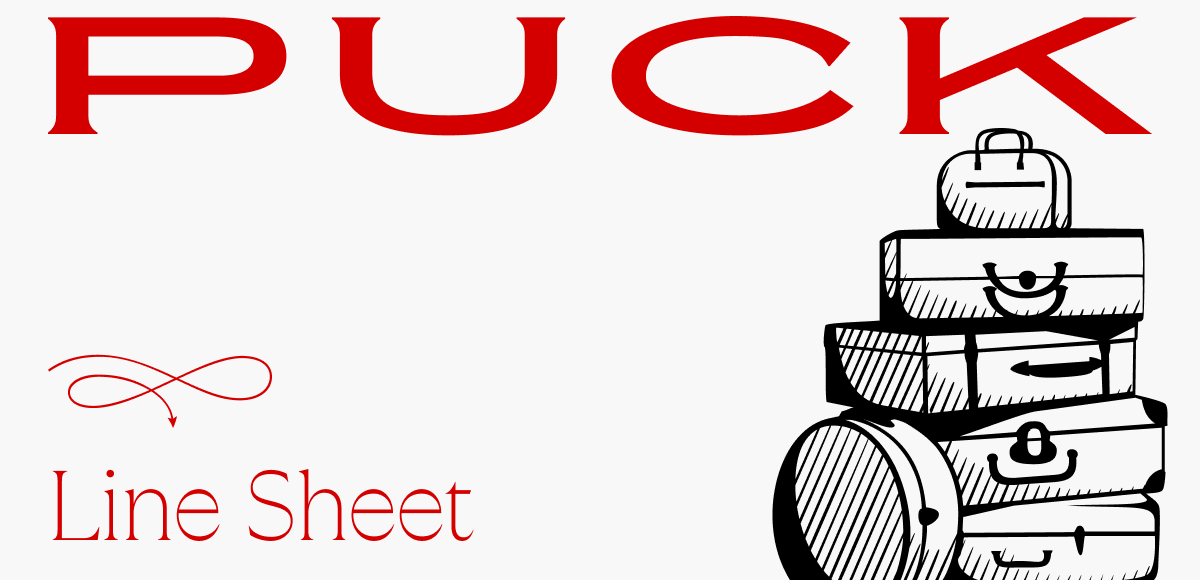

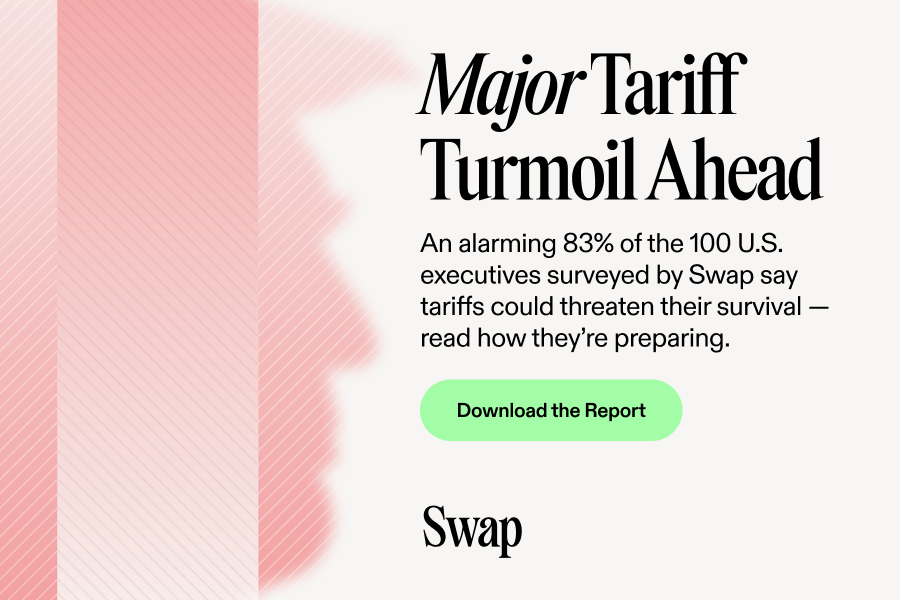

_01JT9HAE33ZD8X46MC2NM7FYDF.jpg)
